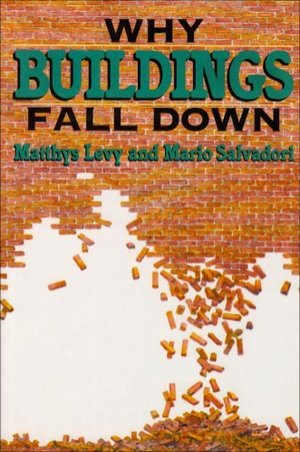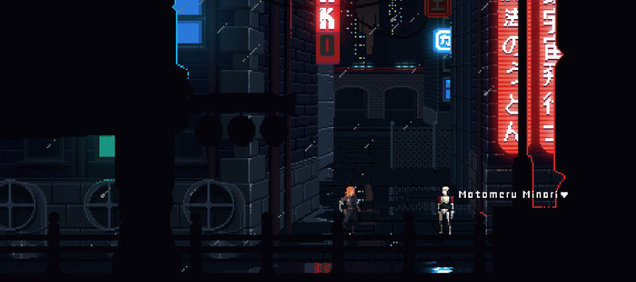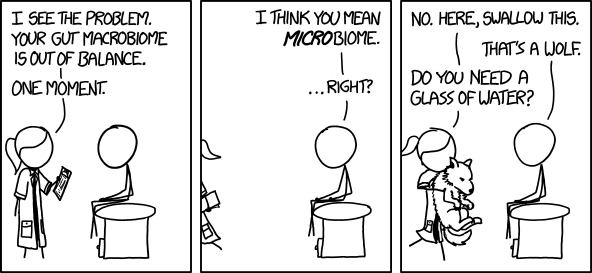Doug Barry
Shared posts
ZX Pac-Man Arcade - A ZX Spectrum version of Pac Man that is faithful to the Arcade!
Retro Arcadia Game of the Year 2023 Halfway Hotlist!
We’re a whole halfway through the year, so it’s time for our annual look at some of the movers and shakers we’ve covered in our regular Weekly Spotlights every Sunday to see where the game of the year top ten currently lies. Before that though, according to my Retro Arcadia Game of the Year 2023 Predictions from the start of January, there’s supposed to be stuff on here that isn’t on here! Specifically, I’m talking Street Fighter 6, and it still pains me that it’s not, but I really didn’t click with the open world format of the demo and the dreadfully social Battle Hub in the beta! Who knows, if it drops in price by the end of the year it might still make the final reckoning! What definitely won’t though is Redfall, another big disappointment and total mess whose only saving grace is that it was on Xbox Game Pass!

Apart from those, there’s two on the January predictions list that fortunately didn’t disappoint and (currently) fill the top two spots, and I’ll also mention Octopath Traveller II from that list too because on the strength of the generous Nintendo Switch demo alone it’s going to make my top ten at the end of the year but I just haven’t got to it yet! Maybe it can fill the other gap it looks increasingly like Hollow Knight Silksong is also going to leave… Again! Anyway, enough moaning about what’s not here because all of that means there’s great stuff I didn’t see coming, which is even better, so let’s run down the current top ten games of the year, as they stand at the end of June 2023…
10. Cursed Demons of Wallachia (ZX Spectrum)

A brand new platforming homage to my dearly beloved Hammer Dracula movies for the ZX Spectrum, no less, was definitely not in that list of predictions at the start of the year! You are Van Helsing, who finds himself inside Castle Dracula in search of garlic and stakes to take down all the vampires, as well as the horde of “cursed demons” who live there with them, before finally escaping. There’s loads of excellent homebrew platfomers on the Spectrum but it’s not just the setting that elevates this one – it looks great, with so much atmosphere and colour (leading to some lovely colour clash!), and there’s a level of polish and attention to detail that only comes with a real love for the subject matter, but most of all it’s the creative and well-thought out level designs – old-school brutal but old-school fun too! Realistically unlikely to be here in the final countdown but deserves to be now!
9. Star Gagnant (Nintendo Switch)

I can’t resist a decent vertical shoot ‘em up, especially when you see a Hudson Soft legend like Takahashi Meijin’s name attached to it. Okay, he’s only in a supervisory role but if there’s one thing he knows it’s how to make a shooter fun, and that’s precisely what this is! It’s got a lovely modern-retro aesthetic that screams early nineties, and a cool rapid-fire special weapon that keeps everything on one button but offers just enough depth. A lengthy arcade mode with several difficulties, plus caravan and challenge modes just about justified the heavily discounted launch price, although the regular one is a stretch, but if you want an accessible and just really enjoyable new schmup you could do a lot worse, especially when it inevitably goes on sale too.
8. Picross S9 (Nintendo Switch)

I’ve been lapping these things up since Mario’s Picross on the original Game Boy, and if there’s one thing that system’s great-great-something-grandchild isn’t short of it’s even more of them! As you can probably tell, this is the ninth in this particular series alone, where crosswords meet sudoku logic puzzles, and apart from a Rewind Board feature I’ll never use, it brings not much else of note that’s new to the party but does have almost five hundred puzzles, across classic and a bunch of other modes, and that’s precisely all I wanted from it!
7. Dredge (Nintendo Switch)

A Lovecraftian fishing RPG of all things, with you initially working to repay your debt to the island community that found you shipwrecked, upgrading stuff to catch more fish to get more upgrades and so on. You’ll pick up quests along the way too, forming the game’s narrative which is also going to force you onto the ocean at night. And you don’t want to be out there at night because that’s when the unfathomable cosmic terrors start turning up from the unfathomable terrifying depths! The tension as you risk safety for reward is superb, racing to complete a mission and get back to the dock before something unspeakable happens! Looks nice, sounds great and the fishing is fun too!
6. Puzzle Bobble Everybubble! (Nintendo Switch)

As much as you can see I enjoyed this, every time I play it still makes me want to play Puzzle Bobble 2, all the way from 1995, but no shame in that, I guess – thing’s a masterpiece! This is plenty more of the same crazy addictive match-three bubble popping though, with all the 2023 super-polished cutesy Bubble Bobble-infused sheen you could ever wish for and probably a bit more on top! The main course is a massive story mode built on hundreds of stages that double in size if you can unlock their expert versions, and ends up with a competitive endless mode with online leaderboards. There’s multiplayer everywhere too, with up to four player co-op, versus modes and even a madcap Puzzle Bobble vs Space Invaders mode! Full review here.
5. The Excavation of Hob’s Barrow (Nintendo Switch)

A point-and-click adventure in the style of classic LucasArts, but with an easy modern interface and possibly less obscure puzzling and exploration! The pixel art graphics, including suitably primitive cutscenes and animations, together with the soundtrack, form the perfect gothic atmosphere for your adventure across the bleak Yorkshire Moors as an antiquarian unravelling the very English folk-horror mysteries of this ancient burial ground. Great story, characters, puzzles and interactions make this a really great point-and-click, and you don’t see many of those nowadays!
4. Graze Counter GM (Nintendo Switch)

Vertical bullet-hell shoot ‘em up with a graze mechanic that rewards getting close to the enemy bullets by filling up a gauge that lets you unleash a huge beam of destruction once it’s full. Shoot stuff with this, collect the stars dropped as a result, and you’ll in turn fill up a break gauge, and once that’s full you can go even more intense for some big scores. Loads of modes, ships, boosts and unlocks, and the presentation is great, with a super-cool modern 16-bit art style, tons going on and an energetic synth-prog soundtrack. And the whole thing just feels really special!
3. Diablo IV (Xbox Series X)

I had no intention of buying this, but it turned out the open to all server stress test a few weeks ago was the best possible advert! It’s a total nerd-out isometric, hack and slash fantasy RPG with endless evil to slaughter, dungeons to explore, abilities to master and not least loot to pick up and pore over and organise in almost equally endless but surprisingly intuitive screens full of lovely numbers! Huge campaign by the looks of it, some hauntingly atmospheric settings already and a decent story so far too, progressed both in-engine and through some very slick cutscenes, and apparently tons more stuff still on the way. Scarily compelling and almost impossible to put down once it’s got you. And it will get you! Only launched earlier this month and I’m still only scratching the surface so watch this space at the end of the year because I reckon it could keep climbing up the countdown!
2. The Legend of Zelda: Tears of the Kingdom

I don’t even know where to begin with this! It takes Zelda’s greatest hits and then creates its own on top and then some – a vast, beautiful and mesmerising adventure that can be familiar but is always something new and often like nothing you’ve ever experienced before! Some of what you can pull off with Link’s new abilities, together with the game’s inherent no-right-way-to-do-it philosophy, leads to some real moments of exhilaration, not to mention anxiety, as you wonder if it’s really going to let you do what you probably shouldn’t be doing. But you should! The Switch might be starting to creak now but you’d never know it here, and you certainly won’t get anything like it anywhere else!
1. Resident Evil 4 Remake (Xbox Series X)

The GameCube original from 2005 is my number three favourite game of all time, and everything that made it so great is lovingly present and correct and they didn’t stop there! The meandering story remains compelling, it’s pacing relentless, the tension likewise, and the characters never more tolerable, and on top of all that it looks more stunning than it ever did and the sound design is truly terrifying! It even plays like a modern survival horror – running and shooting at the same time, crouching and sneaking… What a time to be alive! And what a remake this is, not only taking the original and running with it 2023-style but somehow also reinforcing why it was and still is one of the finest, most influential games of all time. Full review here.

As predictable as I am with my Resident Evils, I really, really like Diablo IV, and the more I keep playing, the higher it’s likely to keep climbing as things currently stand, so I am most interested in seeing where that lands at the end of the year! And while I’m no longer holding out much hope for Hollow Knight Silksong arriving in time to make a dent in the countdown, I’ll be absolutely gutted if sci-fi pinballer Xenotilt doesn’t because its occult-focussed predecessor, Demon’s Tilt, is my favourite pinball game ever so I’ve got very high expectations whenever that arrives! Maybe not so predictable after all then, and there’s still new Tekken, Mortal Kombat, Forza and Starfield to throw into the mix too… I hope you can join me around Christmas for the final reckoning, and, of course, I also hope you’ll keep checking in at Retro Arcadia for our weekly deep-dives and reviews, our monthly looks ahead to upcoming game releases, and the Sunday spotlights for everything else!
Crater Crawler - A rather nice version of Moon Patrol released for the ZX Spectrum NEXT
Books You Should Read: Why Buildings Fall Down

People with long commutes usually come up with tricks to stay focused and alert and avoid the dangerous tendency to zone out during the drive. One trick I used to use was keeping mental track of the various construction projects I’d pass by on my way to work, noticing which piers on a new highway overpass were nearing completion, or watching steelworkers put together the complex rebar endoskeletons of a new stretch of roadway.
One project I loved to watch back in the 80s was a new high-rise going in right next to the highway, which fascinated me because of the construction method. Rather than putting together a steel frame, laying out decking, and covering each floor with concrete, the workers seemed to be fabricating each floor at ground level and then jacking them up on the vertical steel columns. I was fascinated by this because every time I passed by the floors were in a different position, spreading out vertically as the building grew.
And then one day, it just wasn’t there anymore. Where there had been columns stretching nine stories into the city sky with concrete slabs lined up ready to be jacked up into their final positions, there was just an enormous hole in the ground with a ghastly gray cloud of concrete dust rising from it. It was April 23, 1987, and what was once going to be a luxury apartment building called L’Ambience Plaza in Bridgeport, Connecticut lay pancaked into the ground, entombing the bodies of 28 construction workers.
House of Cards
 The collapse of L’Ambience Plaza is just one of the many case studies contained in “Why Buildings Fall Down,” a book that Matthys Levy and Mario Salvadori wrote in 1992. I stumbled upon the book not that long after it came out, and was instantly drawn to it because of my connection to the L’Ambience Plaza collapse; the job I was commuting to that day was actually as an emergency medical technician for an ambulance company in a neighboring city, so many of my friends were down in that hole trying to rescue construction workers as I was passing by, and I actually went to the scene later that day to volunteer my services. By the time I read this book I was already out of the EMS business and far more interested in the engineering aspects of what went wrong that day, and this book provided a detailed case study on L’Ambience Plaza that satisfied my curiosity about what happened that day, as well as more than a dozen other structural failures, most of which also resulted in at least some loss of life.
The collapse of L’Ambience Plaza is just one of the many case studies contained in “Why Buildings Fall Down,” a book that Matthys Levy and Mario Salvadori wrote in 1992. I stumbled upon the book not that long after it came out, and was instantly drawn to it because of my connection to the L’Ambience Plaza collapse; the job I was commuting to that day was actually as an emergency medical technician for an ambulance company in a neighboring city, so many of my friends were down in that hole trying to rescue construction workers as I was passing by, and I actually went to the scene later that day to volunteer my services. By the time I read this book I was already out of the EMS business and far more interested in the engineering aspects of what went wrong that day, and this book provided a detailed case study on L’Ambience Plaza that satisfied my curiosity about what happened that day, as well as more than a dozen other structural failures, most of which also resulted in at least some loss of life.
Each case study in the book is accompanied by simple but excellent diagrams by Kevin Woest that make it easy to understand the root cause of each failure. For L’Ambience Plaza, the threaded jack rods were found to pass through slots in the steel lifting frames rather than holes, which would have prevented them from slipping out and starting the progressive collapse that took the building down. The diagrams make this quite clear, and it’s easy to see why the mechanism was built the way it was; feeding a 1-1/4″ threaded rod through a hole is much harder to accomplish on a job site than slipping the lifting nut into a slot. But it’s also easy to see how that nut could slip out of the slot and cause a lot of trouble in the process.

Rust, Water, Wind, and Human Error
Corrosion and metal fatigue are also well-represented in the book, from the multiple Comet airliner crashes at the beginning of the jet age thanks to stress concentration at the corners of the plane’s square windows to the 1980 collapse of the Mianus River bridge in Connecticut — my home state comes off rather badly in the book, with a total of three failures featured — thanks in part to rust accumulation in the hanger assembly of the suspended span bridge. There’s also a section devoted to the special problems that result from dealing with Mother Nature, including the Scoharie Creek bridge collapse on the New York Thruway in 1987 — it wasn’t a good decade for structural engineers — thanks to scouring of material from under the bridge’s piers thanks to the creek’s flood waters. And what book on structural failures would be complete without a discussion of “Galloping Gertie,” the famously flexible suspension bridge over the Tacoma Narrows that underwent rapid unplanned disassembly shortly after it opened in 1940 thanks to wind and resonance?
Not every structural failure in the book has classical engineering roots, though. Sometimes there’s a social engineering aspect to it, as was the case with the 1980 Hyatt Regency skywalk collapse in Kansas City, which was the single worst structural failure in US history in terms of lives lost prior to 9/11. That collapse, which killed 114 people and wounded over 200 more, involved a set of suspended walkways through an atrium connecting two blocks of the plush hotel, which were suspended from the ceiling by stout threaded rods. The problem was that the original design proved difficult to fabricate on the construction site, so the contractor suggested a change to the design. Unfortunately, the original engineer signed off on the change without really thinking it through; the resulting change in how the loads from the walkways were distributed eventually tore the structure apart. That one is particularly frightening to me; how many other engineers have rubber-stamped a seemingly innocuous change without running at least some calculations?
You Don’t Know Until You Know
I think what comes to mind with all these failures is just how close to the edge structural engineering can cut sometimes, especially when trying to make something innovative and beautiful. Throw enough steel and concrete at a structure and chances are pretty good you’ll get something that can stand the test of time. But if you’re trying to push the envelope and build something light and airy rather than brutally utilitarian, the engineering problem gets a bit tougher. Finding the right places to put structural members to carry the intended loads without interfering with the aesthetic design gets to be a bigger challenge, and sometimes the engineers just don’t get it right. And that’s a little scary, since we’re all constantly in, on, or near structures that may be pushing that structural envelope.
Of course, most structures stand the test of time, and catastrophic failures are few and far between. But there have been enough of them to make a book like “Why Buildings Fall Down” possible, and definitely worth reading if you’re interested in knowing what an engineer’s worst nightmare can be like. And for me, the book actually provided some closure to what I saw that day, and all the engineering questions that popped up in my mind because of it.
Flashing Booby-Trapped Cisco AP With OpenWRT, The Hard Way

Certain manufacturers seriously dislike open-source firmware for their devices, and this particular hack deals with quite extreme anti-hobbyist measures. The Meraki MR33, made by Cisco, is a nice access point hardware-wise, and running OpenWRT on it is wonderful – if not for the Cisco’s malicious decision to permanently brick the CPU as soon as you enter Uboot through the serial port. This AP seems to be part of a “hardware as a service” offering, and the booby-trapped Uboot was rolled out by an OTA update some time after the OpenWRT port got published.
There’s an older Uboot version available out there, but you can’t quite roll back to it and up to a certain point, there was only a JTAG downgrade path noted on the wiki – with its full description consisting of a “FIXME: describe the process” tag. Our hacker, an anonymous user from the [SagaciousSuricata] blog, decided to go a different way — lifting, dumping and modifying the onboard flash in order to downgrade the bootloader, and guides us through the entire process. There’s quite a few notable things about this hack, like use of Nix package manager to get Python 2.7 on an OS which long abandoned it, and a tip about a workable lightweight TFTP server for such work, but the flash chip part caught our eye.
 The flash chip is in TSOP48 package and uses a parallel interface, and an iMX6.LL devboard was used to read, modify and flash back the image — hotswapping the chip, much like we used to do with old parallel-interface BIOS chips. We especially liked the use of FFC cables and connectors for connecting the flash chip to the devboard in a way that allows hotswapping – now that we can see it, the TSOP 0.5 mm pitch and 0.5 mm FFC hardware are a match made in heaven. This hack, of course, will fit many TSOP48-equipped devices, and it’s nice to have a toolkit for it in case you don’t have a programmer handy.
The flash chip is in TSOP48 package and uses a parallel interface, and an iMX6.LL devboard was used to read, modify and flash back the image — hotswapping the chip, much like we used to do with old parallel-interface BIOS chips. We especially liked the use of FFC cables and connectors for connecting the flash chip to the devboard in a way that allows hotswapping – now that we can see it, the TSOP 0.5 mm pitch and 0.5 mm FFC hardware are a match made in heaven. This hack, of course, will fit many TSOP48-equipped devices, and it’s nice to have a toolkit for it in case you don’t have a programmer handy.
In the end, the AP got a new lease of life, now governed by its owner as opposed to Cisco’s whims. This is a handy tutorial for anyone facing a parallel-flash-equipped device where the only way appears to be the hard way, and we’re glad to see hackers getting comfortable facing such challenges, whether it’s parallel flash, JTAG or power glitching. After all, it’s great when your devices can run an OS entirely under your control – it’s historically been that you get way more features that way, but it’s also that the manufacturer can’t pull the rug from under your feet like Amazon did with its Fire TV boxes.
We thank [WifiCable] for sharing this with us!
Sony will soon stop PS3 production and shipments in Japan
 Sony is ready to lay the PlayStation 3 to rest, a little over 10 years after the first model was released. Gematsu and Japanese website Gamestalk have discovered that the company will "soon" stop the PS3's production in its home country. Sony made th...
Sony is ready to lay the PlayStation 3 to rest, a little over 10 years after the first model was released. Gematsu and Japanese website Gamestalk have discovered that the company will "soon" stop the PS3's production in its home country. Sony made th...
Dark Souls III Review
Dark Souls III offers a return to the interconnected world that was such a distinctive element of the first Dark Souls.
In 2009, when From Software’s Demon’s Souls first arrived, it introduced a new formula of action RPG that challenged fans with its punishing structure as much as it intrigued them with its obscurant style of storytelling. Now, seven years later, the Souls series is among the most popular franchises around, and many of its major innovations have spread across the landscape of gaming. With Dark Souls III, From smartly seems to recognize that the series is ready for its final act. Unfortunately, while DS3 is narratively and mechanically a solid conclusion to the series, some major bugs dramatically hurt the overall experience on PC.
When Dark Souls II launched, there was some question as to whether it was a direct, narrative sequel to its numerical predecessor. Any doubt of canonical connection is immediately dispensed with in Dark Souls III, as it quickly sets stakes that long term fans of the series will understand: The first fire that keeps humanity from fading into an abyssal darkness is fading yet again, and the Lords of Cinder--those who had previously done the job of keeping the flame lit--are shirking their duties. As “the Unkindled,” you must bring them into line by doing what you do in every Souls game: Exploring the treacherous ruins of fallen kingdoms, taking down monstrous bosses, and feverishly reading item descriptions to piece together the Whos, Whats, and Whys of everything that’s happening.

Though the Souls games have a reputation for challenge, the truth is that they’ve always been pretty clever about subtly introducing complexity to the player. In some ways, though, Dark Souls 3 feels like it starts at Act 2, tossing you into the deep end much faster than previous Souls games. Within the first half hour, you’ll face a challenging first boss, start planning your character build, and maybe even dig into the weapon upgrading system. It’s a smart decision, since many veteran players are familiar with the basics by now.
This also allows players to concentrate immediately on the new stuff, especially the FP (Focus Points) mechanic. Shoved between the usual health and stamina meters is a new blue bar that is drained whenever players use spells or one of the special abilities attached to every weapon in the game. To keep that blue bar filled, players will have to dedicate part of their stack of healing Estus Flasks to a new type of potion (Ashen Estus Flasks) which can be used to recover that FP. The attacks fueled by FP range from powerful, guard crushing uppercuts to special movement techniques to strategy-shifting combat buffs, and testing out every FP ability I found contributed to the feeling of discovery that I always love in Dark Souls games. These special abilities also open the combat up even further, rewarding tactical consideration and mastery of your chosen weapon.
Hollowing returns in DS3, but it arrives in a totally new, deeply intriguing way.There are, on the other hand, a number of ways in which Dark Souls 3 represents a less open, more constrained experience than its predecessors--or at least something that feels more constrained. While there’s a huge range of armor, weapons, and spells (including a number of fan favorites from past games), the stat system in DS3 really discourages wild, experimental builds (at least for the first playthrough). Heavy armor users will get knocked around a bit more than in the past, while enemies seem to bounce out of a staggered state more often. Sorceries, pyromancies, and miracles all feel weaker than ever, though as in Bloodborne, magic seems to have a bit more bite in New Game+. The result is that balanced, hybrid melee builds do the best throughout the first playthrough--which is great if, like me, that’s what you were planning on playing anyway. Otherwise, though, it could be rough.
It isn’t only the stat builds that can seem constrained, though. While the world has the same geometrically-connected design that so many loved in the first Dark Souls, the opening areas seem more linear than previous games in the series. In actuality, each of the opening zones does have a number of ways through (and out), but it’s not something that is readily apparent in those early hours. Where Dark Souls 1 felt like an intricately designed vertical diorama and Dark Souls 2 was spread out on an impossibly broad plane, Dark Souls 3 gives the impression that it is a line, pulling you from one boss to another, towards finality.

I can’t help but think that this is intentional. It’s no secret that Dark Souls 3 is being positioned as a finale to the series, and throughout the 35 or so hours I put into my first playthrough, there was a constant sense of impending resolution. Though it still primarily delivers its story through its sometimes-obscure use of environmental storytelling and item descriptions, Dark Souls 3 is also perhaps the most straightforward game in the series. You’ll find out what’s happened to some major players in the series’ lore, get confirmation (or denial) of long running fan theories, and even have some pretty metaphysical facts about the world established once and, maybe, for all.
In some ways, this is a disappointment: At its best, Dark Souls has been an unanswered question. I mean this narratively (Whatever happened to Gwyn’s third child, anyway?), but mechanically, too, as each game offers new combat, exploration, and stat-building challenges to solve. But it’s been seven years since Demon’s Souls first confused and intrigued. I’ve gotten better not only at the particular obstacles presented in each game, but also at the process of quickly adapting and learning how to solve this whole subgenre of action RPG.
Ah, um, I... My sword seems to be, ah... You know what, nevermind. This is fine. Everything is fine.But there’s another way in which Dark Souls 3 represents an incredible success for From. Like Metal Gear Solid 4, DS3 had the difficult job of addressing lingering questions without becoming a simple interactive epilogue. And it had to do this in the middle of a Dark Souls overdose. Between a strangely over-hyped release of a Dark Souls 3 t-shirt, an Eli Roth-directed cartoon ad for the game, and the endless spread of the "Dark Souls of X” linguistic infection, it might be the case that Dark Souls has finally gotten a little too popular for its own good.
But it does it. It sticks the landing. Dark Souls 3 is able to reference its expansive history to build environments, boss fights, and narrative turns that leverage the last seven years of games, making both thematic allusion and direct, canonical reference to each Souls game and perhaps (if my headcanon is right (and it is)), even to Bloodborne.
Despite the #brand #overdose, DS3 is a reminder of why the familiar elements of Dark Souls have always worked so well: Poison areas still shake up your usual strategy of attacking and spacing because of the constant health loss; processions of enemy groups walk through the winding streets of a splendored city, demanding you to carefully pull one at a time else risk a running battle against an overwhelming force in an unfamiliar place. And there’s more, too. The clanking of sinister mechanisms; the resigned laugh of a coward; the peculiar side quest that seems to suddenly stop… only for you to find the grisly conclusion hours later while revisiting an already cleared location.

Dark Souls has always been a series interested in the blurry memory of history, and now it has its own massive history to allude to. There was a moment towards the end of the game that made stop in place and just soak in a particular arrangement of fortifications in front of me. Was that.... I’d been there, I think, once, a long time ago. Or had the curse finally taken me, too? It was one of the most magical moments of the series for me, but in the way that in Dark Souls, “magical” means an uncanny blend of beautiful and disorienting.
Less beautiful (but still disorienting) are the crashes, at least on the game’s PC build as of launch. As a lot of folks have reported already (and as you can see in our pre-launch stream from a couple of weeks ago), Dark Souls 3 has been an unstable experience for many players. Approaching a new bonfire or loading into one and then quickly running away form it can cause a sudden hard crash, even for those who meet the game's system requirements. And it's worth noting that I also had crashes far away from bonfires during my playthrough.
This error is especially frustrating when you know that you did nothing to cause it.Some of these were reproducible--I couldn’t use an early game magical sword with a special aura without crashing, for instance. Other times, though, the game would crash without any clear cause. Though the number of crashes reduced over the course of my play time (and, strangely, my NG+ character no longer crashes in areas that he did 40 hours ago), it was the fear of crashing that I could never shake. Dark Souls 3 is already an incredibly tense game--”will I be killed by whatever that is?”, “Is my build right for this boss?”, “Where the hell am I going in the dark and muck?” But that tension slides from “fun” to “frustrating” when I also have to ask “Will I randomly crash in the middle of this boss fight?” And the answer, at least twice, was “Yes, I will.”
Early reports indicate that setting the lighting to low seems to hold at least some of the instability at bay, but it’s especially frustrating because the game otherwise runs well for me on my Nvidia GTX 760 with High settings. I can go hours and hours with only the occasional hiccup, and then suddenly I'm looking at my desktop wallpaper and left to wonder about where DS3 will decide to put me when I load back in. That said, it doesn't seem like this is a fundamental problem with the game's engine, and hopefully we'll see a fix issued sooner than later.
Thankfully, the console versions fare much better in terms of stability. On PS4, it runs at least as smooth as Bloodborne did and with much faster load times (with the trade-off of occasionally slow-loading textures.) On Xbox One, Dark Souls III runs at a noticeably choppier frame rate and a slightly lower resolution than the PS4 build, but it's still very a playable and stable and solid port of the game.

It’s easy to recommend Dark Souls 3 on consoles with a single caveat: Much of what makes it work so well is the way that it does justice to the series’ own past, which just won't mean much for folks hopping onto the Souls train for the first time. My recommendation for the PC build has to come with a firmer qualification. Yes, I still really enjoyed my time with Dark Souls 3 on PC. Yes, I’ll probably play through at least one run of NG+. But my enjoyment was seriously impacted by the unpredictable performance and crashing.
If you’ve stuck it out this far (and especially if you actually care about the world and lore of Dark Souls), Dark Souls 3 will prove to be a satisfying coda to your time with the series. I can’t wait until the community goes into full lore-speculation and secret-finding modes. If Dark Souls needed to end--and all signs point to "Yes, it did"--I’m glad it was able to do so with such singular focus and form.
The Steam Stream Plays Murder, A Gorgeous Cyberpunk Adventure [Update: Finished]

Murder is a cyberpunk adventure with a great look and an interesting concept. Watch me play it right now.
Verizon will start testing speedy 5G wireless in 2016
 Fast 4G data is only just becoming relatively commonplace in the US, but Verizon is already thinking about the next big thing. The carrier just unveiled plans to trial 5G wireless service sometime during 2016. There's no mention of when it's like...
Fast 4G data is only just becoming relatively commonplace in the US, but Verizon is already thinking about the next big thing. The carrier just unveiled plans to trial 5G wireless service sometime during 2016. There's no mention of when it's like...
Law of IT Support #324 [Comic]

[Source: King Longburns | Via Faildesk]
Click This Link for the Full Post > Law of IT Support #324 [Comic]
The Story of Grace Hopper: Pioneering Computer Scientist [Comic]
This is a fantastic comic by artist Pablo Stanley illustrating the story of pioneering computer scientist Grace Hopper (1906-1992,) also known as “Amazing Grace.”




[Source: Stanley Color | Udemy]
The post The Story of Grace Hopper: Pioneering Computer Scientist [Comic] appeared first on Geeks are Sexy Technology News.
FLOW: The Bee Hive That Acts Like a Beer Tap
Doug BarryWow
This is fantastic, and even though I’m no beekeeper, I can only admire a clever invention such as this one. For those who which to get one of these, you can get a “Flow” hive over at indigogo.com. You can also support the project by donating a small amount.
Flow is a revolutionary beehive invention, allowing you to harvest honey without opening the hive and with minimal disturbance to the bees.
Turn the tap and watch as pure, fresh, clean honey flows right out of the hive and into your jar. No mess, no fuss, no expensive processing equipment without disturbing the bees.
We are excited to introduce our new invention that allows you to enjoy fresh honey straight out of your beehive without opening it. It’s far less stress for the bees and much, much easier for the beekeeper.
[FlowHive]
The post FLOW: The Bee Hive That Acts Like a Beer Tap appeared first on Geeks are Sexy Technology News.
Watch a Rubber Band Ball Exploding from the Inside at 25,000 FPS! [Slow Motion Video]
Watch as the guys from Slow Mo Lab put a firecracker inside a rubber band ball and then light it up, catching the explosion via a slow motion camera at 25,000 frames per second. Will the ball survive the explosion or will it tear apart?
Note: be sure to watch the second attempt (at around 2:40,) as the first one isn’t as spectacular since the firecracker wasn’t inserted all the way inside the ball.
Warning: Don’t do this at home, or in fact, anywhere. These guys are professionals.
The post Watch a Rubber Band Ball Exploding from the Inside at 25,000 FPS! [Slow Motion Video] appeared first on Geeks are Sexy Technology News.
The Experimental Malware That Can Take Down Any Mac Made After 2011
Anyone whos suffered the indignity of scrubbing, scanning, and restoring their files after a brush with malware knows that computer viruses suck. But whatever youve encountered, its likely not as bad as Thunderstrike. Its the worst kind of malware there is.
Thunderstrike is a new proof-of-concept attack on Mac computers that was unveiled by programmer and hardware hacker Trammell Hudson at the annual Chaos Communication Congress last montha well-known conference in Germany attended by hackers and digital activists worldwide. What makes Thunderstrike so different from your typical malware infection isn't how it's installed, but where.
Rather than infect a computer's operating system, Thunderstrike targets the software that sits underneaththe firmware or BIOS. Think of it as a pared down operating system that handles all of a computer's lower level functions before it boots, from power management to cooling. (When your laptops fans start to sound like a jet engine, for example, you have the firmware to thank for that.)
But Thunderstrike can do far more damage than run up your energy bill. It can log keystrokespasswords, basicallyand compromise the operating system as it boots, opening the door to further chaos. Think remote access, and access to data not normally accessible from the firmware alone.
Security researcher Rob Graham, writing about the concept in 2013, explained how such an attack could then spread:
"What hackers can do is overwrite the BIOS flash memory, adding their own code that runs on startup. It's a little bit tricky, because eventually the BIOS hands off control to the operating system and ceases to run. There are a number of techniques a hostile BIOS needs to do in order to maintain control. For example, in the early phase of booting, the operating system uses the BIOS drivers to read from hard drives. Therefore, the BIOS might look at which files are being loaded, and then load hostile versions of some of them. Then, once the operating system switches over to using its own device drivers, the hostile code is already running inside the operating system."
And it gets worse. An attack on a computers firmware cant be thwarted by simply reinstalling Windows or OS Xnor by replacing the computer's hard drive or flash memory chips. Oh, and theres currently no way to detect it, either. Once infected, it even disables the ability for Apple to update the firmware, making Thunderstrike near-impossible to remove for all but the person that put it there in the first place.
But therein lies the challenge: actually getting Thunderstrike onto a vulnerable computer. The attack is named because it is delivered using Apples Thunderbolt port, a standard for physically connecting peripherals, like external monitors or hard drives. In other words, it requires physical access to the machine. Plug in a modified Thunderbolt ethernet adapter, say, and reboot the machine, and youve got yourself an infected Mac. (Only on computers built since 2011, though. Earlier Macs without Thunderbolt need not apply.)
This isn't the first time we've heard of attempts at compromising a computer's firmware. Numerous NSA documents detail highly targeted efforts to compromise the firmwares of networking devices and computers. There was also a strange case in 2013, in which security consultant Dragos Ruiu claimed some of his computers had been infected with an unknown firmware-targeting malware. Dubbed badBIOS, he claimed the malware was especially pernicious; it could infect Mac and PC firmwares, was almost impossible to detect, and could transmit itself to computers that were completely disconnected from the network (airgapped) using high-frequency sound.
People regarded Ruiu's claims with healthy skepticismand not without reason. Firmware is highly specific, customized for the exact components within a given machine. Being able to spread such malware wirelessly, and between different makes and models of computer, sounded far-fetched, if not highly difficult to pull off. Indeed, according to Hudson, to the best of our knowledge there are no Mac firmware bootkits in the wild and Thunderstrike is only a proof-of-concept that does not have any malicious payload," Hudson wrote on his website in an FAQ posted following his talk.
But the fact that its possible, and that Thunderstrike works on so many models of Mac, is certainly cause for some concern. Apple has already patched its most recent iMac Retina and Mac Mini models, according to Hudson, and similar patches should be available soon for older Macs. However, he cautioned that older systems can still be returned to an exploitable state, and that other exploitsincluding a remote exploit also unveiled at the conference, called Dark Jedicould be used to achieve similar results.
Remember the good old days, when malware just held your computer ransom for money instead?
Why Do They Always Have to be so Darn Big? [Comic]

SNAP.
[Source: Electric Bunny Comics]
Click This Link for the Full Post > Why Do They Always Have to be so Darn Big? [Comic]
How to Disconnect from SSH in a Terminal on Mac OS X

Ever since switching to OS X there has been one tiny annoyance bugging me, and it really is a small one: My SSH sessions will hang whenever my VPN times out, and then I have to close out of the Terminal to get it to disconnect, because SSH takes forever to time out for some reason.
Of course, there are a bunch of settings that you can use to change the SSH timeout so it’ll recognize that the connection is gone, but I was in the mood for instant gratification. Luckily there is an easy shortcut key sequence you can use to make SSH disconnect instantly.
Enter ~ .
That’s the Enter key, then the Tilde (~) key, followed by the period key (.), although I was able to also just use the tilde followed by period when using a drop-down terminal. In any case, it disconnects me instantly on OS X Mavericks, and that’s good enough for me.

I’m sure that I’ll be using this shortcut key sequence every day, so I won’t forget it, but maybe it’ll help somebody else. And for those that are wondering, CTRL + D just wasn’t working for me.
Here's a Dog that Looks Like Vladimir Putin

Vladimir Putin doesn't have a monopoly on steely eyes and a piercing gaze. A dog in the Ukraine was discovered with a similar stoic expression.
The Ben Affleck Conundrum [Comic]

For those who aren’t aware of it yet, Ben Affleck will be the new Batman. Hey, who knows, the guy might surprise us! Let’s all have a little faith here, okay geeks? :)
[Source: Dorkly]
PSA: Mark of the Ninja Special Edition DLC available on Steam, XBLA
Dosan's adventure is set before the events of the game and includes new challenges as well as two new items. The new items and play-style introduced by Dosan can be used in the original game. Mark of the Ninja's Special Edition DLC also offers developer commentary tracks for every level of the game.
 PSA: Mark of the Ninja Special Edition DLC available on Steam, XBLA originally appeared on Joystiq on Fri, 16 Aug 2013 15:31:00 EST. Please see our terms for use of feeds.
PSA: Mark of the Ninja Special Edition DLC available on Steam, XBLA originally appeared on Joystiq on Fri, 16 Aug 2013 15:31:00 EST. Please see our terms for use of feeds.
[Massimo] talks about Arduino clones

Back in 2005, the Arduino was just a twinkle in they eyes of [Massimo Banzi] and the other core developers. Since then, you can’t go to any electronics site without hitting something beginning with ‘ard~’ or ending with ‘~duino’. The platform has become so popular, people everywhere are piggybacking on the name to the point of trademark infringement or simply outright counterfeiting one of the many official Arduino boards. Now [Massimo] has something to say about these clones, ripoffs, derivatives, and ‘duino-compatible boards.
On the list of things bad for the open source ecosystem, [Massimo] points to direct clones of existing Arduino boards. While these boards are electrically identical to officially licensed boards, they simply don’t support the Arduino project financially and usually don’t contribute to the existing libraries and code. Even worse are counterfeits; these boards copy the trademarks of the Arduino project – sometimes terribly given the three examples above (guess which one is the real one) – and directly profit off of the Arduino project without giving any support in return.
There are other veins of Arduino that [Massimo] considers more acceptable. Arduino-compatible boards, seen by the dozen over on Kickstarter, usually add something of their own, be it a radio chip, or an entirely different microcontroller. Derivatives, like Teensy and Adafruit’s Flora actually bring new things to the table with improved hardware and new and interesting libraries.
As far as counterfeits and clones go, we can’t agree more with what [Massimo] has to say. You have to admire the folks in the Arduino project being so open about their creations and admiring the Arduino derivatives that bring some new hardware to the table. Then again, that’s the lesson of the Arduino project; you can make hardware open source and still be outrageously popular.
Filed under: Arduino Hacks
The Red Dot Situation [Comic]

[Source: Andrew Gregoire - I am ARG | Via]
How Security Experts Choose and Manage Passwords for Their Accounts

We have all heard the same advice about choosing strong, secure passwords, never re-using passwords for multiple accounts, and more when managing our own sets of passwords. But what methods do the tech industry’s top security experts use? Ars Technica decided to find out by interviewing five well known individuals from the tech industry.
The five individuals that Ars Technica interviewed were:
From the blog post: They include renowned cryptographer Bruce Schneier, who is a “security futurologist” at BT and recently joined the Electronic Frontier Foundation’s board of directors; Adriel T. Desautels, CEO of Netragard, a firm that gets paid to hack large companies and then tell them how it was done; Jeremiah Grossman, founder and CTO of WhiteHat Security; Jeffrey Goldberg, “defender against the dark arts” at AgileBits, a company that develops the popular 1Password password manager; and Jeremi Gosney, a password security expert at Stricture Consulting.
How much does your password management approach have in common with these security experts? Were you surprised by any of their methods or approaches to password management? Has one of their approaches inspired you or given you a great idea for managing password security? Share your thoughts, experiences, and ideas in the comments!
Girl And Her Ridiculously Adorable Kitten Perform A Nerdy Love Song
Okay, the song is pretty cute. But the ukulele-playing kitten? I don't even know where to begin.
This is comedian/singer DeAnne Smith with a song that's as nerdy as all get out. And then, the cat enters the equation, and all bets are off.
Hey, Wednesday's over! We're going to make it through this week after all, guys. Talk music, cats, games, or whatever else you please, here or at TAY.
(Via Laughing Squid.)
A Tribute To Some Characters That Got Killed Off In Game of Thrones
Take Gotye's catchy song, Somebody I Used To Know. Change the lyrics so that they're about characters in the first season of Game of Thrones. What do you get? This delightfully funny video by notliterally commemorating some of the characters we 'used to know,' that's what.
He got a goddamned papercut, are you for real?
Ha.
"A Character I Used to Know" — A "Game of Thrones" Season 1 Parody [notliterally]
An Epic Suit of Scale Mail Armor for your Guinea Pig [Pic]

Interested in purchasing this epic suit of scale mail armor for your guinea pig? This is your lucky day, my friend! The owner is auctioning the armor on eBay, with all proceeds going to Metropolitan Guinea Pig Rescue in Virginia.

The immiscibility of oil and water creates a multitude of...




The immiscibility of oil and water creates a multitude of bubbles of all sizes. A lack of miscibility occurs when the forces between like molecules are very strong for two liquids—essentially the oil molecules and the water molecules are so much more strongly attracted to themselves than they are to one another that they cannot mix. Surface tension—another expression of molecular forces—pulls the oil into droplets that float in the water and refract the light in such lovely ways. (Photo credit: Vendula Adriana Kaprálová Hauznerová; via thinxblog)













